Ford Mustang Boss 302 Vs Mitsubishi Lancer Evo

Normally we try to bring you head-to-head racetrack shootouts that pit similar types of vehicles against each other. But every once in a while, it’s fun (and surprisingly informative) to step outside the industry’s definitions and categories, by testing two vehicles with utterly different approaches to going fast. There probably aren’t too many people out there cross-shopping the Ford Mustang Boss 302 and the Mitsubishi Evolution MR, but perhaps our test results will inspire a few folks to broaden their definition of what “fun and fast” really means and look beyond the categories and sub-categories the industry’s marketing nerds have been corralling us with.
FAST FACTS
| 1. A turbocharged 2.0L 4-cylinder makes 291 hp at 6500 rpm and 300 lb-ft of torque at 4000 rpm. |
| 2. MR models feature Eibach springs, Bilstein shocks, 18-inch forged aluminum BBS wheels, lighter Brembo brakes and a 6-speed dual-clutch transmission. |
| 3. GSR models start at $34,695 with our MR test car at $37,895 plus $795 delivery. |
Sports car, pony car, sport compact – who cares? If you’re an enthusiast-driver looking for something that’ll put a smile on your face, whether it’s at the race track or down your favorite winding road, the real questions should be: how fast is it, and is it any fun to drive?
THE ODD COUPLE
On paper the Boss 302 and the Evolution X MR couldn’t be more different. Where the Mustang uses a brawny 444 hp 5.0-liter V8 to motivate its rear wheels, the Evo is equipped with a tough little 2.0-liter turbocharged 4-banger that sends 291-horsepowers to all four wheels. This obviously puts the Mitsubishi at a significant power disadvantage, though the Evo is almost 100-lbs lighter despite having two extra doors.
Still, this is not a contest the Evolution X is going to win on power-to-weight ratio, but what it does have in its favor is a whole host of high-tech grip-enhancing features including an Active Center Differential that sends torque to whichever wheel(s) have the most available traction. The Active Yaw Control system is just as impressive, which uses a rear limited-slip differential and a pair of clutches to split torque between the rear wheels, dialing out the understeer normally associated with AWD vehicles and replacing it with a machine that’s amazingly neutral. The dual-clutch 6-speed flappy paddle gearbox in the MR model is also a technological marvel, providing impossibly fast though rather harsh shifts in either direction.
FAST FACTS
| 1. A 5.0L V8 makes 444 hp at 7400 rpm and 380 lb-ft of torque at 4500 rpm. |
| 2. Compared to the GT, Boss 302 models gain a custom exhaust, new clutch, 3.73 rear end, adjustable shocks, stiffer and lower springs and Brembo brakes with upgraded pads. |
| 3. An optional Track Key adjusts 600 parameters including cam timing, spark maps, engine braking, fuel control and throttle response. |
| 4. Pricing starts at $42,200 plus $795 delivery charge |
By comparison, the Mustang uses technology from the Stone Age, the solid rear axle somehow surviving the engineering process despite the fact that the horse and carriage is no longer a popular form of transportation. Though not independent, the business end of the Boss 302 has been upgraded to a 3.73 axle ratio along with a carbon clutch-type limited slip differential (or an optional Torsen LSD which has been strangely grouped with upgraded Recaro seats). The one piece of high-tech gadgetry Ford did bless the Boss with is an adjustable electric power steering system, which we set to Sport for enhanced feedback and feel.
CONTRASTING PERSONALITIES
As you might expect, given the utterly opposing approaches to engineering these two machines feature, their on-track personalities share very little in common. The first thing you notice in the Boss 302 is the fabulous sound of its highly tuned V8, which breathes in through a unique “runner in the box” intake manifold and out through a quad exhaust system that has both side pipes and rear mufflers and tailpipes. The pace at which the Boss 302 accelerates is also pretty stunning, as is the rev-happy nature of its 5.0-liter motor (which redlines at 7500 rpm). Parts of Boss 302 may be rather low tech compared to the Evo, but its engine is an utterly modern design, featuring forged pistons, revised connecting rods, sodium filled valves, and high-lift variable-timing camshafts.
Get the Flash Player to see this player.
The Boss is about a lot more than just its motor though – it is, after all, designed to be a track-day variant of the Mustang GT (already a capable machine by any standards). So although its live rear axle isn’t the most sophisticated approach to suspension design, the engineers at Ford have certainly dialed it in for impressive amounts of grip and at-the-limit composure. Equipping it with sticky Pirelli P-Zero summer tires is never a bad starting point, 255/40R19s up front and 285/35R19s out back, but chassis balance this outstanding ultimately has to stem from its carefully tuned suspension package, including stiffer springs and bushings, adjustable shocks, and a larger diameter rear stabilizer bar.
Far from the wild bucking bronco I thought it might be, the Boss 302 inspires confidence at the limit. That being said, you do have to respect that its limits are very high and any misjudgments in corner entry speed or throttle application can result in an embarrassing spin. The old “slow in, fast out” adage applies well to the Boss 302, but if you’re sparing with the whip and work your way up to its limits gradually, it’s seriously fast, not to mention being both a surprisingly rewarding and engaging machine to drive.
The Evolution MR, on the other hand, is not about being sparing with the whip, nor is it about a conservative approach to corner entry. This maniacal little Mitsubishi is, as it turns out, a power-sliding hooligan disguised as a high-tech sport sedan. Where the Mustang requires most of its braking be accomplished before turn-in, in the Evo you can approach corners in a more Scandinavian fashion, flicking it into a four-wheel drift while trail braking and applying the throttle at the same time. As a result, you scrub off speed on corner entry with the tires as much as the brakes, yet somehow this technique (and its intelligent center diff) allows the Evo to maintain momentum to the apex, at which point the turbo kicks in, the Yaw control straightens you out and the AWD system slingshots you down the next straight with a grin on your face.
You can, of course, choose to drive the Evolution in a more traditional “brake in a straight line, power on at the apex” style, but our lap timer clearly indicated that a more rally-inspired approach was faster – not to mention being a lot more fun!
Compare Specs
| Vehicle | 2013 Ford Mustang Boss 302 | Advantage | 2013 Mitsubishi Lancer Evolution MR |
|---|---|---|---|
| Engine | 5.0L V8 | - | 2.0L 4-Cyl Turbo |
| Horsepower | 444 hp | Boss 302 | 291 hp |
| Max. Torque | 380 lb-ft | Boss 302 | 300 lb-ft |
| Fuel Economy | 15 MPG city / 26 MPG hwy | - | 17 MPG city / 23 MPG hwy |
| Weight | 3,632 lbs | Lancer Evo | 3,571 lbs |
| Power to Weight Ratio | 8.18 lbs/hp | Boss 302 | 12.27 lbs/hp |
| Weight Distribution | 55/45 | Boss 302 | 57/43 |
| Starting Price | $42,200 | Lancer Evo | $37,895 |
| Lap Time | 1:21.45 | Boss 302 | 1:22.99 |
| Recorded Top Speed | 112 mph | Boss 302 | 102 mph |
| Max Lateral G-Force | 1.29 G | Boss 302 | 1.20 G |
The brakes on the Evo were seriously impressive though. The numbers point to the Boss producing more stopping power, though the Evo’s felt like they’d clean out your sinuses at the end of a long straight. They also screeched incessantly when not at the track, indicating a seriously aggressive (perhaps even suspicious) pad.
With the Evo there were, however, a few techno-glitches along the way. The engine was inexplicably hitting a phantom rev limiter during the approach to Turn 7 – it felt like the dual clutch gearbox was unsure of whether it should be downshifting or upshifting. Whatever the reason for it, this software glitch was costing precious time, as the various e-systems sorted themselves out and allowed the engine and transmission to play nicely together again.
Editor-in-Chief Colum Wood also noticed that the dual-clutch gearbox would at times benefit from some manual shifting, automatically resorting to third gear on some slower sections of the track when second better suited his purpose.
In addition, the Yokohama Advan 245/40R18 tires that come standard on the Evolution were looking rather tattered (even before the abuse we piled on them). It’s hard to say if this was contributing to the relative lack of tire grip the Evo was exhibiting compared to the Boss 302, or if it was simply a case of the Mustang having wider and stickier tires. In any case, the Evo was somehow still able to accelerate out of corners with amazing pace despite having less mechanical grip, no doubt a testament to its amazing (and very Japanese sounding) Super All Wheel Control system.
SURPRISING PERFORMANCE
Having had our fun familiarizing ourselves with the personalities of these two very different yet highly capable machines, it was time to get down to business. Would the time-honored approach of big V8 power sent to the rear wheels reign supreme, or could a high-tech AWD system, yaw control, and a dual-clutch gearbox somehow overcome a 150 hp deficit? It wouldn’t be the first time the Evo proved to be a giant-killer.
But with two fairly long straights at our test track, it was always going to be tough for the Mitsubishi to hang with the far more powerful Ford. We knew that heading into this shootout, so it wasn’t too surprising that the Boss’s fastest lap time was 1.5-seconds quicker than the Evo’s. What was surprising was the outright pace of both cars, the Boss 302’s best lap of 1-minute 21.451-seconds being amongst the quickest we’ve ever recorded at this track (our best to date is a 1:20.1 in a 580-hp Camaro ZL1). The Evolution X MR’s best time of 1:22.999 was also unexpectedly quick, putting it right there with the fastest times we could turn in the lighter and more powerful (and far more expensive) Audi TT-RS.
Looking a little more closely at the data from the fastest lap in each car, it’s plain to see that the Evo lost the war down the straights. On the front straight it fell behind by 0.5-seconds, losing another 0.4-seconds down the second straight. What was surprising, at least upon first glance, was the 0.6-seconds it lost on the shorter “middle” straight, between turns 6 and 7. This is actually the result of the aforementioned phantom rev limiter issue, and had the Evo not been hesitating here it so long, it would have lost perhaps half as much time.
In the corners it was a much different story, where the Evolution held its own despite having narrower and less sticky tires. In Turn 1 the Evo managed to claw back a 10th of a second, taking back a further 2/10ths during the twisty final segment between Turns 7 and 10. In all of these corners, it’s interesting to note that its not corner entry speed but rather speed from the apex to corner exit where the Evo claimed back these little chunks of time.
Through the tight and twisty esses of Turns 3, 4 and 5, a section I thought the Evo’s willingness to change direction and AWD grip would give it an advantage over the bigger and heavier Boss 302, it turned out to be a dead heat. Props must be given to the Boss 302 here for its steering precision, along with its excellent dampers and body roll control, all of which allowed me to take an aggressive line that used all of the curbs.
Looking at the lateral g-forces generated by both cars, the Boss 302’s turn-in grip advantage is hard to miss. The Mustang was hitting consistently higher g’s during the first part of just about every corner, a function of its wider and stickier front tires and track-oriented suspension tuning, but once I was back on the throttle and cornering g’s evened out between the two cars, it was the Evolution’s intelligent center diff, torque vectoring rear end and AWD grip that allowed it to out-accelerate the Boss from apex to corner exit.
NO REPLACEMENT FOR DISPLACEMENT?
The easy closing here is to simply state that there’s still no replacement for displacement, and that the Mustang’s engine is what really makes the Boss the boss. But that would be missing the point entirely.
First of all, it has to be emphasized that both of these cars are hugely capable around a race track and an absolute hoot to drive hard. Any enthusiast-driver worth their salt is going to get out of either of these cars after a spirited driving session with a healthy cocktail of adrenaline, dopamine and testosterone coursing through their veins. That being said, each machine exercises the brain and the body in very different ways, despite the fact that their lap times are surprisingly close.
The Boss 302 is the more difficult car to drive at the limit, but that’s always going to be true of a track-day variant as powerful and as stiffly sprung as this one. But to Ford’s credit, they have done an impressive job balancing the edginess that comes with increased grip and roll stiffness and the forgiveness most of us need when we get a little too enthusiastic behind the wheel. For a live rear axle pony car weighing 3,500 lbs or so, it really is quite remarkable how composed the Boss 302 is, even when sliding it around at yaw angles better suited to the Evo.
THE VERDICT
The Mitsubishi Evolution MR is definitely a friendlier car when driven to its limits and beyond. I always got out of the Evo with a smile on my face, its rally car spirit urging you to try a Scandinavian flick or at least a power-on four-wheel drift. But perhaps the Evo is a little too easy to drive fast, what with all its onboard technology and yaw control magic. The dual clutch gearbox, another of the Evo’s technological marvels, wowed me with its shifting speed, yet left me feeling disconnected from the driving experience.
Maybe I’m just bemoaning the realities of the Internet age, but the purity and simplicity of the Mustang Boss 302, solid rear axle and all, managed to engage and reward me as a driver far more than the Evolution X could. I didn’t jump out of the Boss with a boyish grin like I did with the Evo – I got out of it with my heart pumping and my fingertips tingling. Heel and toe downshifting, balancing front grip on corner entry and then transitioning the weight to the rear and fighting the urge to jump back on the gas too soon, these are the challenges the Boss 302 put before me, gave me a pat on the back, and said “good luck, because you’re in control”. And for that reason alone, it’s the one I’d take home with me if I was given the choice.
2013 Ford Mustang Boss 302, 2013 Mitsubishi Lancer Evolution MR
LOVE IT
- Broad powerband and plenty of revs
- Impressive grip, neutral handling balance
- Steering precision and feel
- AWD system finds traction as if by magic
- Neutral handling balance thanks to Active Yaw Control
- Outstanding hoonability
LEAVE IT
- Heavy clutch pedal and shift action
- Rear end twitchy at the limit
- Retro styling inside and out
- Harsh gear shifts in S-Sport mode
- Low rent interior
- Sense the car is driving, not you

Some say he's closely related to Bigfoot and that he's a former Canadian Touring Car Champion. All we know is he's the AutoGuide Stig! A thesis defense away from being your intellectual superior he's a professor of vehicle handling dynamics. The part-time touring car and time attack racer is faster (much faster) than your average auto journalist.
More by Dave Pratte
















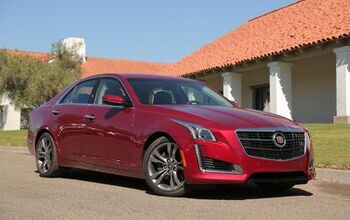
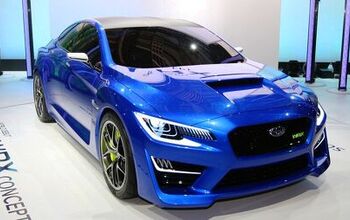
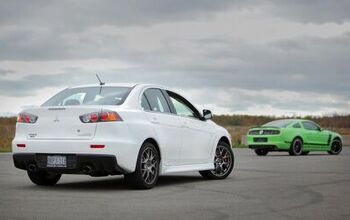



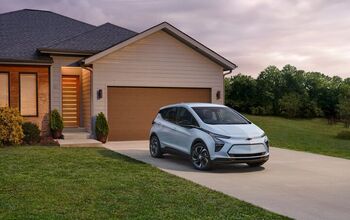
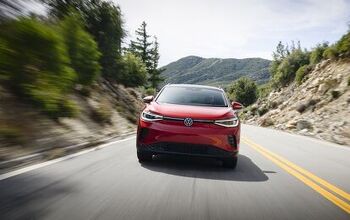
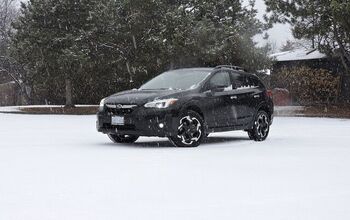


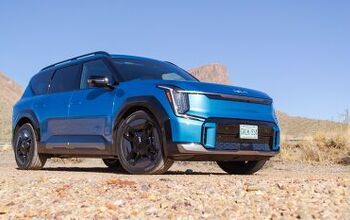
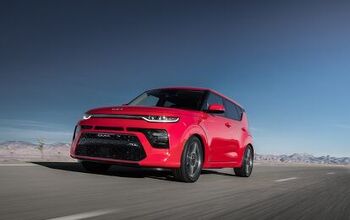

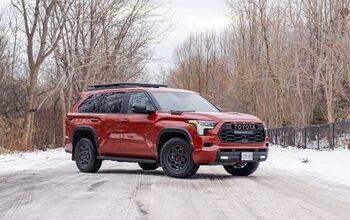
Comments
Join the conversation